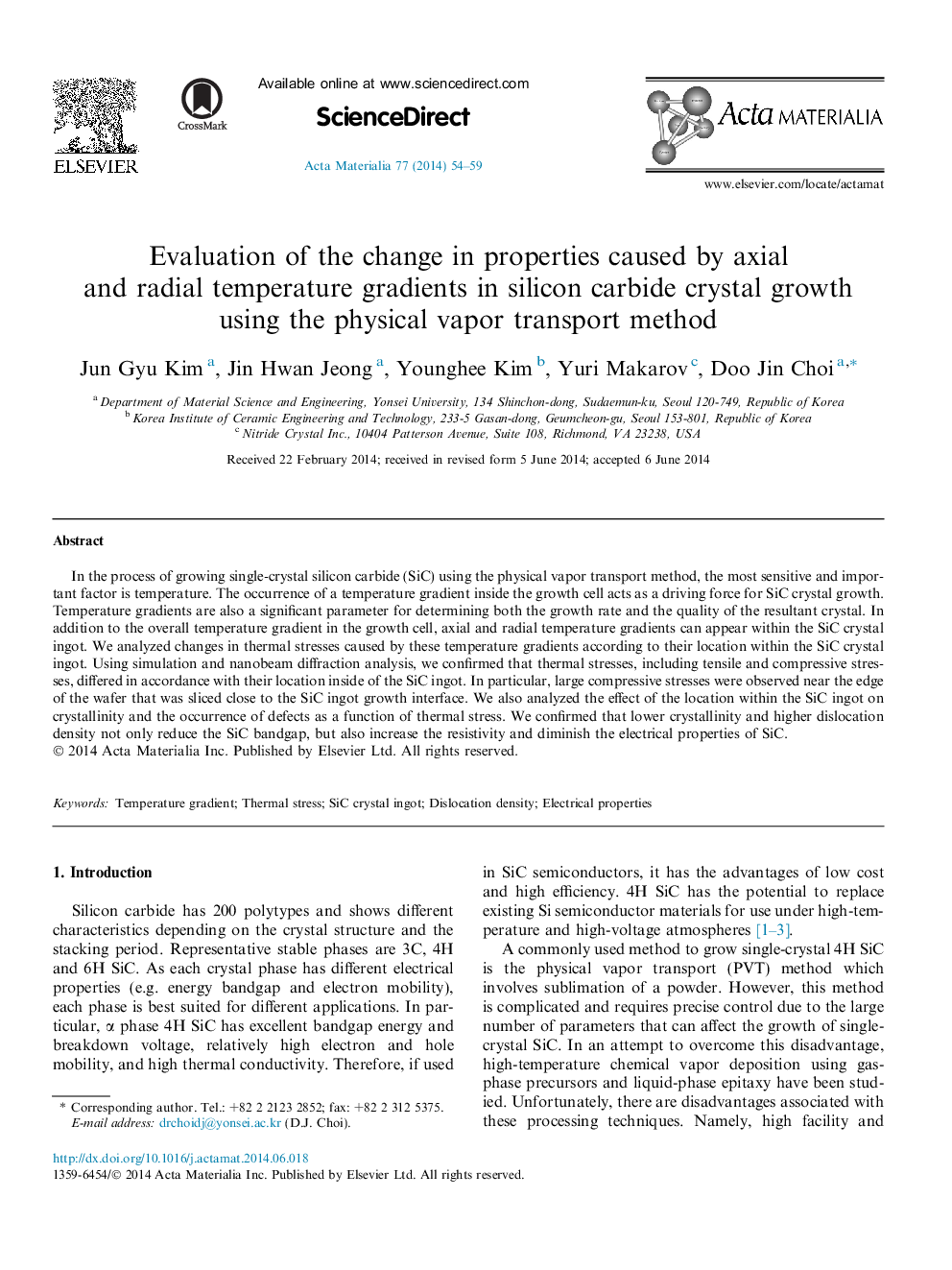| Article ID | Journal | Published Year | Pages | File Type |
|---|---|---|---|---|
| 7881373 | Acta Materialia | 2014 | 6 Pages |
Abstract
In the process of growing single-crystal silicon carbide (SiC) using the physical vapor transport method, the most sensitive and important factor is temperature. The occurrence of a temperature gradient inside the growth cell acts as a driving force for SiC crystal growth. Temperature gradients are also a significant parameter for determining both the growth rate and the quality of the resultant crystal. In addition to the overall temperature gradient in the growth cell, axial and radial temperature gradients can appear within the SiC crystal ingot. We analyzed changes in thermal stresses caused by these temperature gradients according to their location within the SiC crystal ingot. Using simulation and nanobeam diffraction analysis, we confirmed that thermal stresses, including tensile and compressive stresses, differed in accordance with their location inside of the SiC ingot. In particular, large compressive stresses were observed near the edge of the wafer that was sliced close to the SiC ingot growth interface. We also analyzed the effect of the location within the SiC ingot on crystallinity and the occurrence of defects as a function of thermal stress. We confirmed that lower crystallinity and higher dislocation density not only reduce the SiC bandgap, but also increase the resistivity and diminish the electrical properties of SiC.
Related Topics
Physical Sciences and Engineering
Materials Science
Ceramics and Composites
Authors
Jun Gyu Kim, Jin Hwan Jeong, Younghee Kim, Yuri Makarov, Doo Jin Choi,
